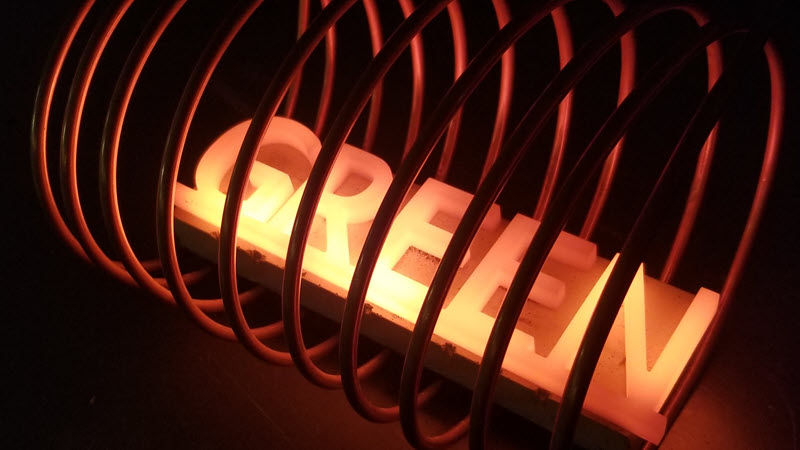Induction Brazing an Aluminum Assembly
Objective A company wanted to assess using induction heating for their aluminum assembly brazing process, and contacted THE LAB at Ambrell to utilize...
Applications
Applications: More
Applications: More

Industries:
Industries: More
Industries: More
Industries: More

Products:
Products: More
Services:
Services: More

Learn:
Learn: More
About:


Induction is a non-contact heating method that uses electromagnetic induction to generate heat in a conductive object and it offers numerous benefits to manufacturers. For example, it is a highly efficient and precise heating method. It is commonly used for a wide range of applications, including brazing, soldering, heat treating, melting, bonding, preheating for welding, food processing and more. It is also a more green heating method than many other heating methods, and in this blog post, we'll focus on those benefits.
While there are a number of green benefits, here are what might be considered the top five green benefits of induction heating:
Induction heating is very efficient, with energy transfer efficiencies as high as 90%. This means that it uses less energy to heat objects than other methods, such as gas heating, which has an efficiency of roughly 50%.
Induction heating does not produce any direct emissions, such as carbon dioxide or nitrogen oxides. This makes it a cleaner and more environmentally friendly heating method than fossil fuel-based heating methods.
Induction heating does not produce any smoke or fumes, which can improve air quality in the workplace and reduce the risk of respiratory problems for employees.
Induction heating systems are very quiet, which can help to reduce noise pollution in the workplace and surrounding environment.
Induction heating systems are safer than traditional heating methods because they do not produce any open flames or hot surfaces. This reduces the risk of employee accidents and injuries.
One example of how induction heating is being used to reduce environmental impact in manufacturing is in automotive manufacturing. Induction heating is used to heat metal parts for a variety of processes, such as brazing, annealing, and heat treating. In the past, these processes were typically done using gas-fired furnaces. However, induction heating is much more efficient and produces fewer emissions.
As a result, many automotive manufacturers are switching to induction heating to reduce their environmental impact and make their processes more sustainable.
Induction Heating is a Green Alternative
Induction heating is a green and sustainable heating method that offers a number of benefits for manufacturing. It is more efficient, produces fewer emissions, and improves air quality. Induction heating systems are also safer and quieter than traditional heating methods.
If you are looking for a more sustainable heating process, induction heating is a great option to consider. Visit the green technology section on our website to learn more about the green benefits of induction heating and even see what you could save in energy and emissions with our green calculator.

Objective A company wanted to assess using induction heating for their aluminum assembly brazing process, and contacted THE LAB at Ambrell to utilize...

Induction heating is a process that uses electromagnetic fields to heat electrically conductive materials. It has been used in numerous industries...

Induction heating, a process that uses electromagnetic induction to heat electrically conductive materials, is often thought of for large industrial...